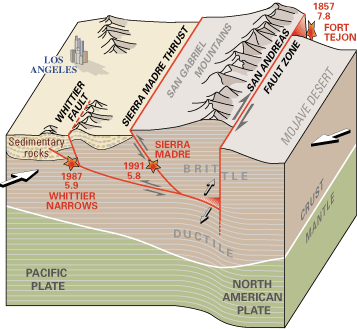I was reading a book about tectonic plate boundaries, and I came across this paragraph:

It says that when a plate edge slides with another plate edge it causes a vertical fault, as San Andreas fault. I thought that SAF is a horizontal fault i.e. strike-slip fault. So what does the book mean by vertical faults?
